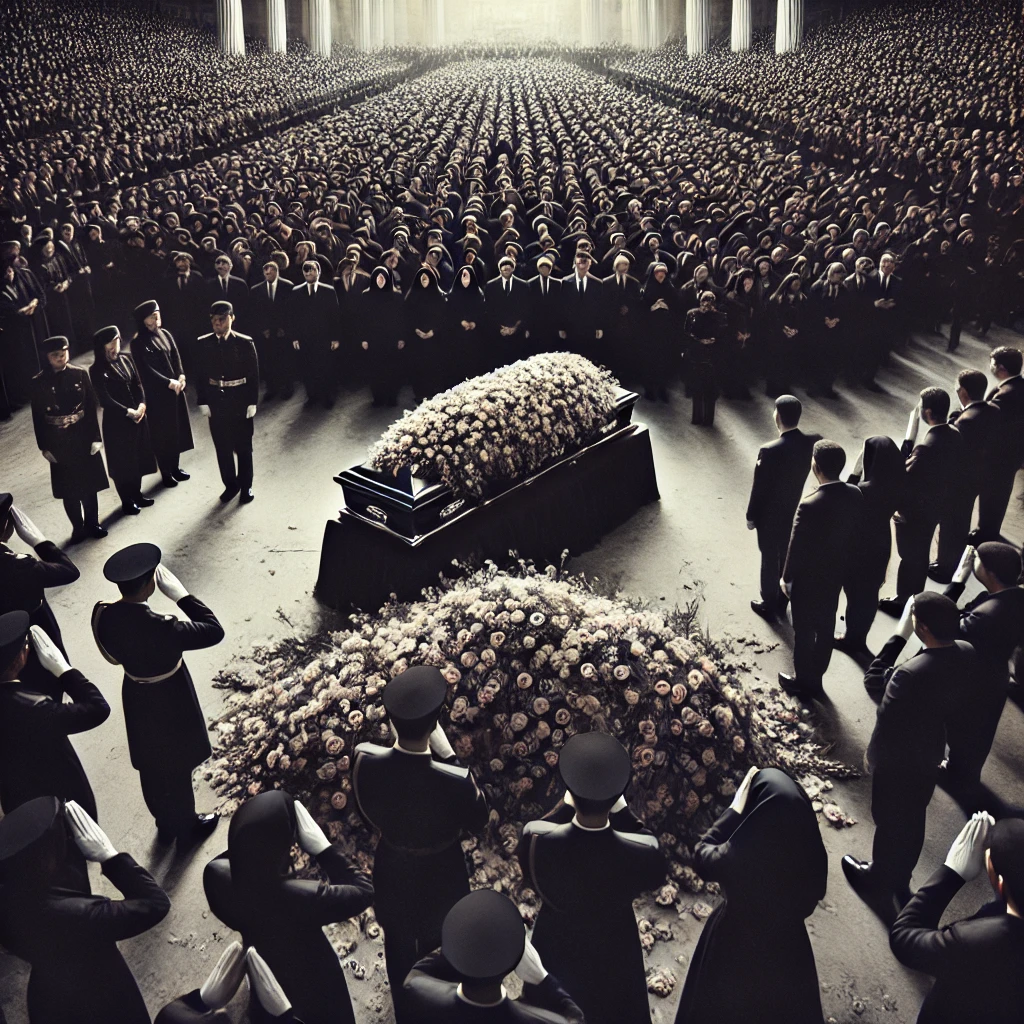On September 6th, 1997, the world came together in a collective moment of mourning as the funeral of Diana, Princess of Wales, took place in London. An estimated 2.5 billion people watched the event on television, making it one of the most-watched broadcasts in history. The outpouring of grief and the widespread media coverage reflected Diana’s immense global influence and the deep connection people felt with her, both in the United Kingdom and around the world.
Princess Diana, known as the “People’s Princess,” had captured the hearts of millions with her compassion, humanitarian work, and down-to-earth nature. Her tragic death in a car accident in Paris on August 31st, 1997, shocked the world and left many struggling to comprehend the loss of such a beloved figure. In the days leading up to her funeral, an unprecedented wave of public mourning swept across Britain and beyond, with millions of people paying tribute by laying flowers, leaving messages, and gathering in public spaces.

The Funeral Procession: A Final Journey
The funeral procession for Princess Diana began at Kensington Palace, her London home, and moved through the streets of the city to Westminster Abbey, where the service was held. As the procession made its way through London, an estimated one million people lined the streets to pay their respects. The sight of her coffin, draped in the royal standard and adorned with white flowers, was a poignant reminder of the young life that had been cut short.
Among the most emotional moments of the procession were the images of Diana’s sons, Prince William and Prince Harry, walking behind her coffin alongside their father, Prince Charles, and Diana’s brother, Earl Spencer. The young princes, aged 15 and 12 at the time, showed remarkable strength as they participated in this deeply personal and public farewell to their mother.

The Service at Westminster Abbey
The funeral service at Westminster Abbey was attended by over 2,000 guests, including members of the royal family, world leaders, celebrities, and close friends of Diana. The service was a blend of tradition and personal touches that reflected Diana’s unique spirit. Elton John’s performance of “Candle in the Wind,” re-written in tribute to Diana, became one of the most memorable moments of the service, capturing the deep sorrow felt by those in attendance and the millions watching worldwide.
Earl Spencer’s eulogy, in which he spoke candidly about his sister’s life and the challenges she faced, resonated with many viewers. He described Diana as “the very essence of compassion, of duty, of style, of beauty,” and his words struck a chord with those who admired her for her kindness and dedication to helping others.
A Global Audience United in Mourning
The decision to broadcast the funeral live allowed people around the world to share in the moment of mourning, creating a sense of global unity. From small villages to major cities, people gathered around televisions to watch the service and pay their respects. The sheer scale of the audience, estimated at 2.5 billion people, underscored Diana’s extraordinary global influence and the profound impact of her death.
This global connection was further emphasized by the range of cultural and religious leaders who participated in the service, offering prayers and reflections that transcended national and religious boundaries. The funeral became not just a British event but a global moment of reflection and sorrow.

The Legacy of Diana’s Funeral
The funeral of Princess Diana had a lasting impact on both the British monarchy and the public’s relationship with it. The event highlighted the deep emotional connection that people felt with Diana, a connection that had sometimes been at odds with the more traditional image of the royal family. In the wake of the funeral, there was a noticeable shift in the monarchy’s approach, with a greater emphasis on connecting with the public and addressing issues that resonated with the people.
The outpouring of grief also led to a re-evaluation of the media’s role in Diana’s life and death. The intense scrutiny and relentless pursuit by the paparazzi were widely criticized, leading to calls for greater privacy and respect for public figures. This period marked a turning point in how the media covered the lives of the royal family and other celebrities.
Diana’s Enduring Influence
Princess Diana’s legacy continues to resonate today, more than two decades after her funeral. Her humanitarian efforts, particularly her work with AIDS patients and her campaign to ban landmines, have inspired countless others to continue her work. Diana’s ability to connect with people from all walks of life and her dedication to using her platform for good remain central to how she is remembered.
The funeral itself, with its unprecedented global reach, serves as a reminder of Diana’s unique place in history. It was a moment when the world came together to mourn the loss of a figure who had touched so many lives. The emotional response to her death and the widespread grief expressed during her funeral highlighted the profound impact she had on people across the globe.
A Moment in History
The funeral of Princess Diana on September 6th, 1997, was more than just a royal event; it was a global moment that reflected the deep connection people felt with Diana. The vast television audience, the millions who lined the streets of London, and the countless tributes left in her memory all spoke to the extraordinary influence she had in her short life. Her funeral remains one of the most-watched events in history, a testament to the enduring legacy of the “People’s Princess.”
